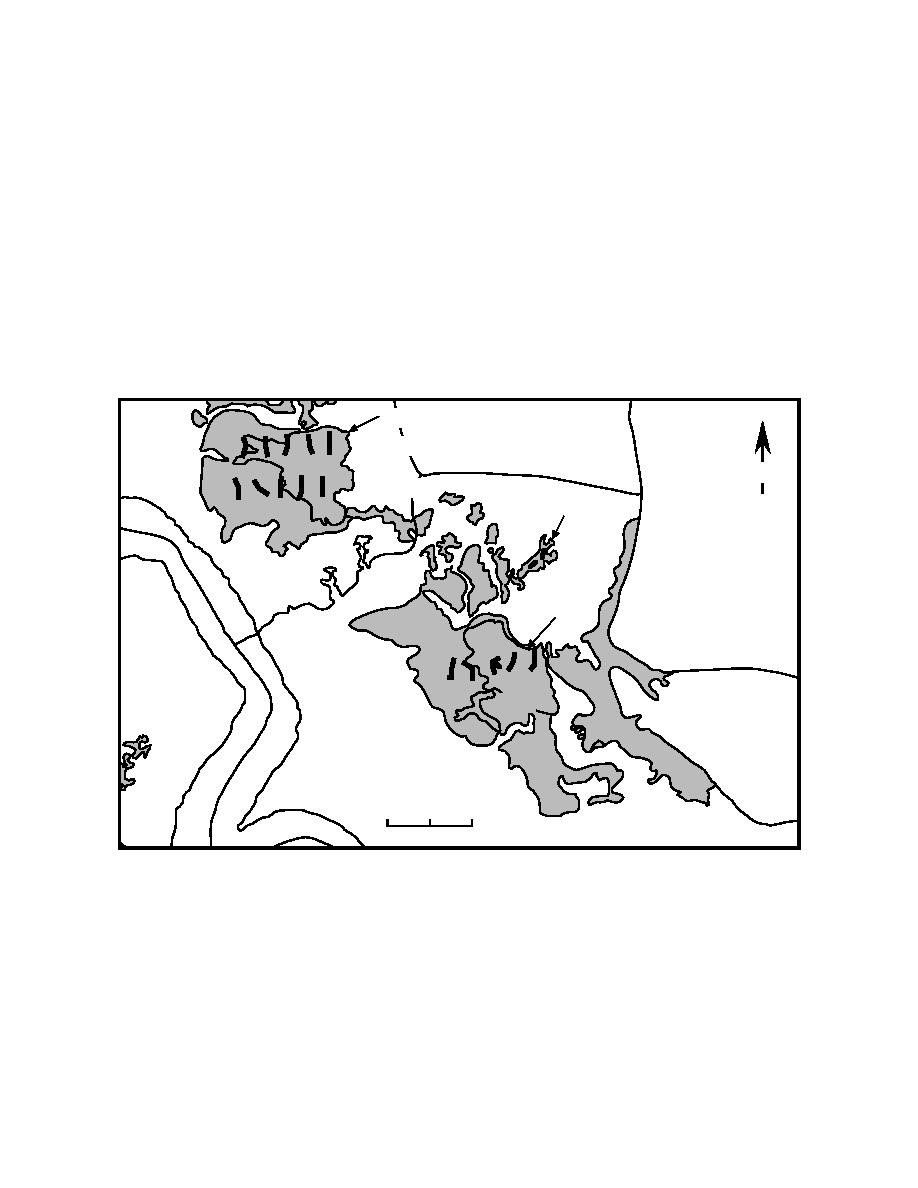
Composite sampling
field corer, which has a handle and tapered tip
To determine if the contaminant is present in a
that greatly facilitated insertion of the corer into
given area, composite sampling is conducted. We
the consolidated sediment. The corer's internal
established transects bisecting ponds to monitor
diameter was 2 cm, and when a 9-cm-length core
sublimation/oxidation conditions and for base-
was taken resulted in a 28-mL sediment sample.
line and verification sediment sampling (Walsh et
Up to five replicate composite samples were
al. 1998). Transects were up to 200 m long, and at
taken from each grid.
evenly spaced intervals, composite samples were
Discrete sampling
collected to determine if hot spots (localized areas
containing white phosphorus particles) were
During the investigation to determine which
present (Fig. 9). Each composite sample was
areas of Eagle River Flats were contaminated,
made up of sediment cores obtained at the nodes
several highly contaminated locations were
of a 1.82-m square grid covering a 5.46-m-wide
found in both intermittent and permanent ponds.
area extending up to 20 m perpendicular to the
Resampling of these locations has allowed us to
bisecting transect. The grid spacing is based on
monitor the decline in contamination with time.
Pond 109
C/D
BT
Bread Truck
North Transect
100 150 200
N
m
0
50
Bread Truck
South Transect
Pond 155
50 100 150 200
0
m
NE Composite
SW Composite
Pond 183
100 150 200
A
0
50
m
Area C
Transect
EOD
C
0
200 m
Figure 9. Map of composite sampling transects in Pond 109 (BT) and 183 (Area C).
the assumption that the hot spots are 1 m in diam-
The first location was initially sampled in 1992
eter (Gilbert 1987) (see Extent of Contamination of
and given the designation "Site 883," southwest
Eagle River Flats for the derivation of the 1-m sam-
of the edge of Pond 183. The white phosphorus
pling zone). At each grid node, a 50-mL sediment
concentration found here was one of the highest
concentrations found in ERF, over 200 g/g.
sample was obtained using a plastic syringe corer
(2.65-cm i.d., 9-cm length). Because of sediment
When 270 mL of sediment from this site was
consolidation due to draining, insertion of the
sieved, over 100 white phosphorus particles were
plastic corer into the sediment was very difficult.
isolated. Located within the intermittent pond on
In areas that were drained after the initial pump
the west side of Pond 183, this location was ideal
deployment in Pond 183, we substituted an Oak-
for monitoring the persistence of white phospho-
11



 Previous Page
Previous Page
